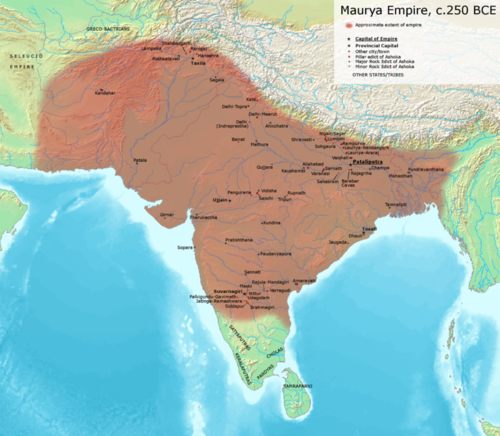
Ashoka Maurya (304–232 BCE), commonly known as Ashoka and Ashoka the Great




One of the more enduring legacies of Ashoka Maurya was the model that he provided for the relationship between Buddhism and the state. Throughout Theravada Southeastern Asia, the model of rulership embodied by Ashoka replaced the notion of divine kingship that had previously dominated (in the Angkor kingdom, for instance). Under this model of 'Buddhist kingship', the king sought to legitimise his rule not through descent from a divine source, but by supporting and earning the approval of the Buddhist sangha. Following Ashoka's example, kings established monasteries, funded the construction of stupas, and supported the ordination of monks in their kingdom. Many rulers also took an active role in resolving disputes over the status and regulation of the sangha, as Ashoka had in calling a conclave to settle a number of contentious issues during his reign. This development ultimately led to a close association in many Southeast Asian countries between the monarchy and the religious hierarchy, an association that can still be seen today in the state-supported Buddhism of Thailand and the traditional role of the Thai king as both a religious and secular leader. Ashoka also said that all his courtiers always governed the people in a moral manner.


 English
English 日本語
日本語 中文(简体)
中文(简体) 中文(繁體)
中文(繁體) 한국어
한국어 Italiano
Italiano español
español Deutsch
Deutsch Русский
Русский



